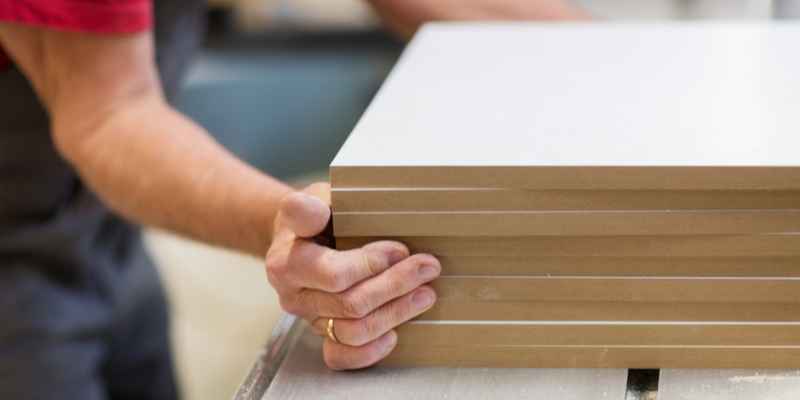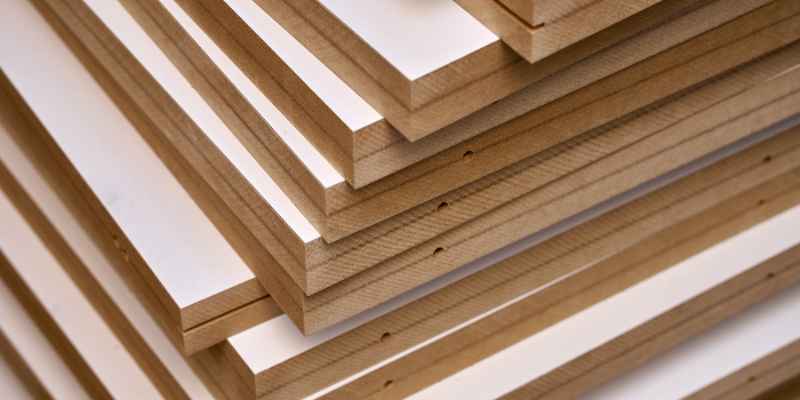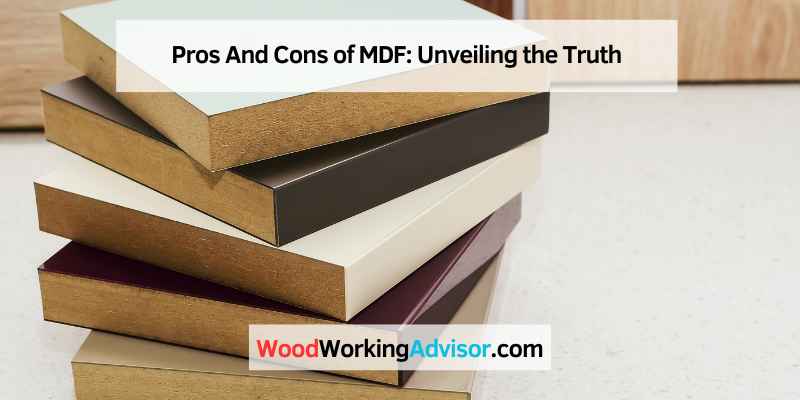MDF is a versatile and cost-effective material for furniture, but it can release harmful chemicals and is prone to water damage. MDF, or Medium Density Fiberboard, is a popular choice for furniture and cabinetry due to its affordability and smooth finish.
However, it can emit formaldehyde and other chemicals, posing health risks. Additionally, MDF is susceptible to swelling and warping when exposed to moisture, limiting its use in high-humidity environments. Understanding the pros and cons of MDF can help you make informed decisions when choosing materials for your projects.
We will explore the advantages and disadvantages of MDF in detail, providing valuable insights for both professionals and DIY enthusiasts.
Benefits Of Mdf
MDF, or Medium Density Fiberboard, is a popular choice for many woodworking and construction projects due to its numerous benefits. From cost-effectiveness to versatility, MDF offers a range of advantages that make it a preferred material for various applications.
Cost-effectiveness
MDF is cost-effective and affordable, making it a budget-friendly option for projects with financial constraints.
Smooth Finish And Versatility
MDF provides a smooth finish that is ideal for painting and laminating, allowing for versatile design options.
Consistency In Strength And Size
MDF offers consistent strength and size, ensuring reliable performance for various applications.
Drawbacks Of Mdf
MDF, or Medium-Density Fiberboard, is a popular material in the construction and furniture industries due to its affordability and versatility. However, like any other material, it has its drawbacks. In this section, we will discuss the drawbacks of MDF, including its moisture sensitivity, health concerns during cutting, and limited structural strength.
Moisture Sensitivity
MDF is highly susceptible to moisture damage. Unlike solid wood, which can withstand some exposure to moisture, MDF tends to swell and warp when it comes into contact with water or high humidity levels. This can be a significant drawback, especially in environments prone to moisture, such as kitchens and bathrooms. It is essential to protect MDF from excessive moisture by applying a waterproof coating or avoiding its use in areas with high humidity.
Health Concerns During Cutting
When cutting MDF, it is crucial to take necessary precautions as the process can release harmful airborne particles and chemicals. MDF is made by compressing wood fibers with resin binders, which can emit formaldehyde, a known carcinogen, when cut or sanded. The inhalation of these particles can pose health risks, including respiratory irritation, allergies, and even long-term health issues. To minimize exposure to these harmful substances, it is recommended to wear appropriate protective gear, such as a mask and goggles, and to work in a well-ventilated area.
Limited Structural Strength
While MDF is a cost-effective alternative to solid wood, it does have limited structural strength. Unlike solid wood, which has natural strength and durability, MDF relies on glue and resin binders to hold its fibers together. This means that it may not be suitable for applications that require significant load-bearing capacity or structural integrity. MDF is more prone to sagging, splitting, and crushing under heavy loads. It is essential to consider the intended use and weight-bearing requirements before opting for MDF in structural applications.
Environmental Impact

MDF, or medium-density fiberboard, has both pros and cons in terms of environmental impact. On the positive side, it is made from recycled wood fibers and requires less energy to produce than solid wood. However, MDF contains formaldehyde, a harmful chemical that can off-gas into the environment.
MDF, or Medium-Density Fiberboard, is a popular choice for furniture and cabinetry due to its affordability and versatility. However, like any product, MDF has its pros and cons, including its environmental impact. Here we will discuss the sustainability of MDF production, as well as its recyclability and waste management.
Sustainability Of Mdf Production
MDF is made from wood fibers that have been compressed and bonded together with resin. While this process utilizes waste wood and reduces the need for virgin timber, it still requires energy and resources to produce. Additionally, some resins used in MDF contain formaldehyde, a harmful chemical that can off-gas into the environment. To address these concerns, many MDF manufacturers are adopting more sustainable practices, such as using low-formaldehyde resins and sourcing wood from responsibly managed forests.
Recyclability And Waste Management
When it comes to waste management, MDF can be both a blessing and a curse. On one hand, MDF scraps can be recycled and used in new products, reducing waste and conserving resources. However, MDF cannot be easily composted or biodegraded, meaning that it can contribute to landfill waste. Additionally, MDF that has been treated with certain coatings or finishes may not be recyclable at all. To reduce the environmental impact of MDF waste, it is important to choose products made with recycled MDF and dispose of scraps properly.
In conclusion, while MDF offers many benefits in terms of affordability and versatility, it is important to consider its environmental impact. By choosing products made with sustainable MDF and properly disposing of waste, we can help reduce the negative effects of this popular material.
Mdf Vs. Solid Wood
MDF and solid wood are popular choices for furniture and home improvement projects. Let’s compare the two materials in terms of durability, aesthetic differences, and price considerations.
Comparing Durability
- MDF: Resistant to warping and cracking.
- Solid Wood: Prone to warping if exposed to moisture.
Aesthetic Differences
MDF can be easily painted to achieve different looks.
Solid wood showcases natural grains and textures.
Price Considerations
| MDF | Solid Wood |
|---|---|
| Cost-effective | Usually more expensive |
Mdf In Home Projects
Medium Density Fiberboard (MDF) is a versatile material commonly used in various home improvement projects due to its affordability and ease of customization.
Best Practices For DIY Enthusiasts
- Wear protective gear when cutting or sanding MDF.
- Seal the edges with primer to prevent moisture damage.
- Use sharp tools to achieve clean cuts and edges.
Long-term Maintenance
- Regularly dust and clean MDF surfaces with a damp cloth.
- Avoid placing heavy objects on MDF to prevent warping.
- Repair any scratches or dents promptly to maintain the appearance.
Innovations In Mdf
MDF, or Medium-Density Fibreboard, is a popular material for furniture and home décor due to its affordability and versatility. However, it also has some drawbacks, such as its susceptibility to water damage and its tendency to emit formaldehyde. Innovations in MDF aim to address these issues and improve the overall quality of the material.
MDF or Medium Density Fiberboard is a popular alternative to traditional wood. It is made by compressing wood fibers with resin under high pressure and temperature. Over the years, MDF has undergone several innovations to improve its properties and make it a better building material. In this blog post, we will discuss the pros and cons of MDF and focus on the recent innovations that have been made in this material.
Advancements In Water Resistance
One of the major drawbacks of MDF is its susceptibility to water damage. However, recent innovations have made MDF more water-resistant. Manufacturers have developed a range of water-resistant MDF products that are suitable for use in high-humidity environments such as bathrooms and kitchens. These products are treated with water-repellent chemicals that prevent water from penetrating the surface of the MDF. Additionally, some manufacturers have introduced a moisture-resistant resin that is used in the production of MDF. This resin helps to prevent swelling and warping when the MDF comes into contact with water.
Improvements In Health Safety
Another area of innovation in MDF is the improvement in health safety. Traditional MDF contains urea-formaldehyde resins that can emit harmful volatile organic compounds (VOCs). These VOCs can cause respiratory problems and other health issues. To address this problem, manufacturers have developed low-emission MDF products that have significantly reduced levels of VOCs. These products are manufactured using alternative resins such as soy-based and phenol-formaldehyde resins that emit fewer VOCs. These low-emission MDF products are safer to use and better for the environment.
In conclusion, MDF has come a long way since its introduction. Innovations in MDF have led to the development of products that are more water-resistant, safer to use, and better for the environment. As with any building material, MDF has its pros and cons. However, with the recent advancements, MDF is becoming a popular choice for builders and DIY enthusiasts alike.
Making An Informed Decision
When it comes to choosing the right material for your project, it is important to make an informed decision. One material that is commonly used in construction and furniture manufacturing is Medium Density Fiberboard, or MDF. However, before you decide whether or not to use MDF, it is essential to consider the pros and cons. This will help you assess your project needs, weigh the cost versus performance, and ultimately make the best choice for your specific requirements.
Assessing Your Project Needs
Before diving into the pros and cons of MDF, it is crucial to assess your project needs. Consider the following factors:
- The purpose of your project: Is it for furniture, cabinetry, or interior trim?
- The environment in which the project will be placed: Will it be exposed to moisture or high humidity?
- The desired aesthetic: Are you looking for a smooth and consistent surface or a wood grain appearance?
- Your budget: How much are you willing to spend on materials?
By evaluating these aspects, you can determine if MDF is the right choice for your specific project requirements.
Weighing Cost Vs. Performance
When considering MDF, it is crucial to weigh the cost versus performance. Here are the pros and cons to help you make an informed decision:
| Pros | Cons |
|---|---|
| 1. Affordable and cost-effective option | 1. Susceptible to water damage and swelling |
| 2. Smooth and consistent surface for painting and finishing | 2. Prone to chipping and denting |
| 3. Less likely to warp or crack compared to solid wood | 3. Contains formaldehyde and other chemicals |
| 4. Versatile and easy to work with | 4. Not as strong or durable as solid wood |
By weighing these factors, you can determine if the benefits of MDF outweigh the drawbacks for your specific project.
Remember, making an informed decision about using MDF requires careful consideration of your project needs and a thorough understanding of the pros and cons. By doing so, you can confidently choose the right material that aligns with your budget, performance expectations, and desired aesthetic.

Frequently Asked Questions
What Is Mdf?
MDF stands for Medium Density Fiberboard. It is an engineered wood product made from wood fibers and resin compressed under high pressure and heat. MDF is commonly used in furniture, cabinetry, and molding due to its smooth surface and versatility.
What Are The Advantages Of Using Mdf?
MDF has several advantages, including its smooth and consistent surface, its affordability, and its ability to be easily painted or stained. It also has a high level of dimensional stability, meaning it is less likely to warp or shrink over time compared to solid wood.
Are There Any Disadvantages To Using Mdf?
One potential disadvantage of using MDF is that it is not as strong as solid wood and can easily crack or split if not properly supported. It is also more susceptible to water damage and should not be used in high moisture areas.
Additionally, MDF can release formaldehyde, a carcinogen, if not properly sealed.
Is Mdf Eco-friendly?
MDF is not considered eco-friendly as it is made from wood fibers and resin, which can release harmful chemicals into the environment during production. However, some manufacturers use recycled wood fibers and low-emitting resin to reduce the environmental impact.
Conclusion
To sum up, MDF offers affordability and versatility for furniture, but it is prone to moisture damage. Consider your specific needs and budget before choosing MDF for your projects. Understanding the pros and cons will help you make an informed decision for your woodworking endeavors.


